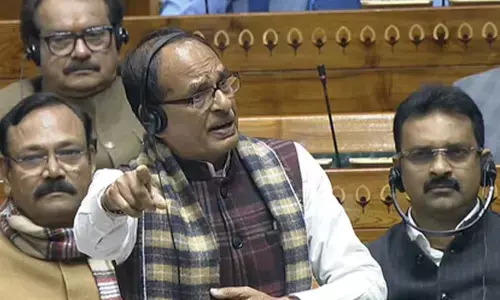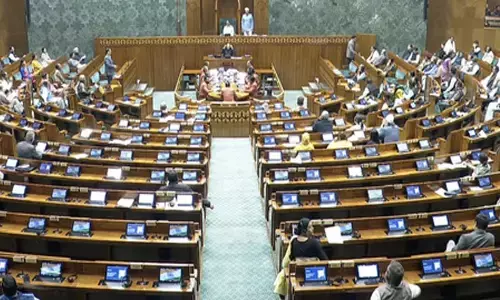A plain face can take the sheen out of deadly tobacco products

Tobacco use poses the biggest threat to public health in the world today, even as more than 1 billion people consume it globally. It is the leading preventable cause of premature deaths worldwide, killing more than 6 million people each year, and is a risk factor for 6 of the world’s 8 leading causes of death.
Tobacco use poses the biggest threat to public health in the world today, even as more than 1 billion people consume it globally. It is the leading preventable cause of premature deaths worldwide, killing more than 6 million people each year, and is a risk factor for 6 of the world’s 8 leading causes of death.
It is also the greatest preventable risk factor for non-communicable diseases (NCDs) - such as cardiovascular diseases, cancers, chronic respiratory diseases, diabetes, etc - which account for 63% of all premature deaths. According to the Tobacco Atlas 2015 tobacco consumption costs the global economy over US$1 trillion and may have an economic impact of as much as US$2.1 trillion.
At the recent Asia Pacific Lung Cancer Conference (APLCC 2016) Dr Prakit Vathesatigkit, Executive Secretary of Action on Smoking and Health Foundation of Thailand, had said that an estimated 23% of all lung cancer deaths in the ASEAN region are due to smoking, and that tobacco control is the most cost effective way to reduce not only lung cancer but other NCDs as well.
PLAIN PACKAGING
World No Tobacco Day, that takes place on May 31 each year, highlights the devastating impact of tobacco use on health, as well as advocates for policies that help people quit tobacco use and discourage non-users from starting. This year’s World No Tobacco Day theme is ‘Get ready for plain packaging’.
Tobacco package design is particularly effective at influencing consumers’ decisions to buy (or not buy) tobacco products. For the tobacco industry it acts like a mobile billboard promoting consumption of tobacco products by making them look more attractive, distracting users from health warnings and deceiving people into thinking that some products are less harmful than others. Plain packaging, on the other hand, makes tobacco products less attractive and directly informs the users of the negative health effects of tobacco use with a graphic picture and health warning. In this context, plain packaging is particularly threatening to the long-term growth of the tobacco industry.
Plain packaging means having packs of a standardized unappealing colour, and large graphic pictorial and text health warnings, sans any branding. It prohibits the use of logos, colours, brand images or promotional information on packaging other than brand names and products names displayed in a standard colour and font style.
In a World No Tobacco Day (WNTD 2016) webinar organised by CNS (Citizen News Service), Dr Tara Singh Bam, Regional Advisor (Tobacco Control - Asia Pacific) at the International Union Against Tuberculosis and Lung Disease (The Union), said that there are only two ways to reduce tobacco use - preventing youth from starting to use tobacco and encouraging/helping users to quit. He reiterated the benefits of plain packaging - "It reduces the attractiveness of tobacco products; eliminates the effects of tobacco packaging as a form of advertising and promotion; addresses package design techniques that may suggests that some products are less harmful than others; and increases the noticeability and effectiveness of health warnings."
Graphic/pictorial health warnings too are forceful for keeping tobacco use low, especially among young people. Studies in Canada, Brazil, Singapore, and Thailand have shown that graphic warnings have educated smokers on the specific harms of tobacco use and influenced them to consider quitting. Plain packaging, coupled with pictorial/graphic and text health warnings, thus becomes a very formidable tool to thwart the tobacco industry’s nefarious designs.
Australia became the first country in December 2012 to go for plain packaging of all tobacco products with graphic health warnings covering over 50% of main display areas. Thereafter, smoking rates in the country fell at a fast pace. The number of adolescents currently smoking reduced by more than 70% - from 23.5% in 1996 to 6.7% in 2014.
More recently, Ireland, the UK, and France have passed laws to implement plain packaging from May 2016. Dr Bam informed that Nepal, which has already implemented 90% pictorial warnings, could be the first country in the South Asia region to adopt plain packaging very soon.
Dr Bam lauded some recent public health wins against the tobacco industry:
* UK- On May 19, 2016, the UK High Court ruled in favour of plain tobacco packaging, upholding rules that ban branding and require graphic health warnings across 65% of the front and back surfaces, with written warnings down each side. The judge rejected legal grounds for challenge from British American Tobacco, Philip Morris International, Japan Tobacco International and Imperial Brands.
* European Union (EU)- On May 4, 2016, tobacco companies lost a legal challenge against EU rules that force them to put graphic images on cigarette packages warning people of the dangers of smoking
* India-
(i) On March 8, the Supreme Court issued notice to the Health Ministry on a PIL which sought immediate implementation of plain packaging rules for cigarette and other tobacco products
(ii) On May 4, the Supreme Court gave a ruling for introducing 85% pictorial health warnings on all tobacco product packs, turning down the manufacturers’ plea to stay the implementation of the new cigarette packaging rules.
What Next?
180 nations are already party to the global tobacco treaty— WHO Framework Convention on Tobacco Control (WHO FCTC) - whose Article 11 requires the implementation of strong pack warnings and the ban of misleading descriptors such as low tar, light, and ‘mild’. Also its Article 5.3 recognizes that there is a fundamental and irreconcilable conflict of interest between tobacco industry and public health policy and commits governments to firewall health policy from industry capture.
In the post 2015 development agenda, action on WHO FCTC is now among the world’s top development priorities. Our governments have already committed to achieve the 17 sustainable development goals (SDGs) as envisaged in the 2030 agenda for sustainable development that was adopted at the UN Summit in September 2015. One of these (SDG 3.a) is to strengthen the implementation of WHO FCTC in all countries.
While commitments are in place, concrete action is lagging behind. Governments will meet at the forthcoming 7th session of the FCTC Conference of the Parties (COP7) that will take place in India in November, 2016 to discuss progress on WHO FCTC implementation and adopt decisions to guide global tobacco control for the next two years to ensure that the implementation of WHO FCTC is on track for the world to meet the SDG targets by 2030.
Strong tobacco control legislation is an absolute necessity to reverse the global growth of tobacco use, and achieve the health targets prescribed in the SDGs. Fully implementing domestic tobacco control laws and WHO FCTC on the ground is a public health and social justice imperative. To quote the Tobacco Atlas- “We stand at a crossroads of the tobacco epidemic, with the future in our hands. We can choose to stand aside and take weak and ineffective measures, or instead implement robust and enduring measures to protect the health and wealth of nations.”
Shobha Shukla, Citizen News Service – CNS
- Shared under Creative Commons (CC) Attribution License

















